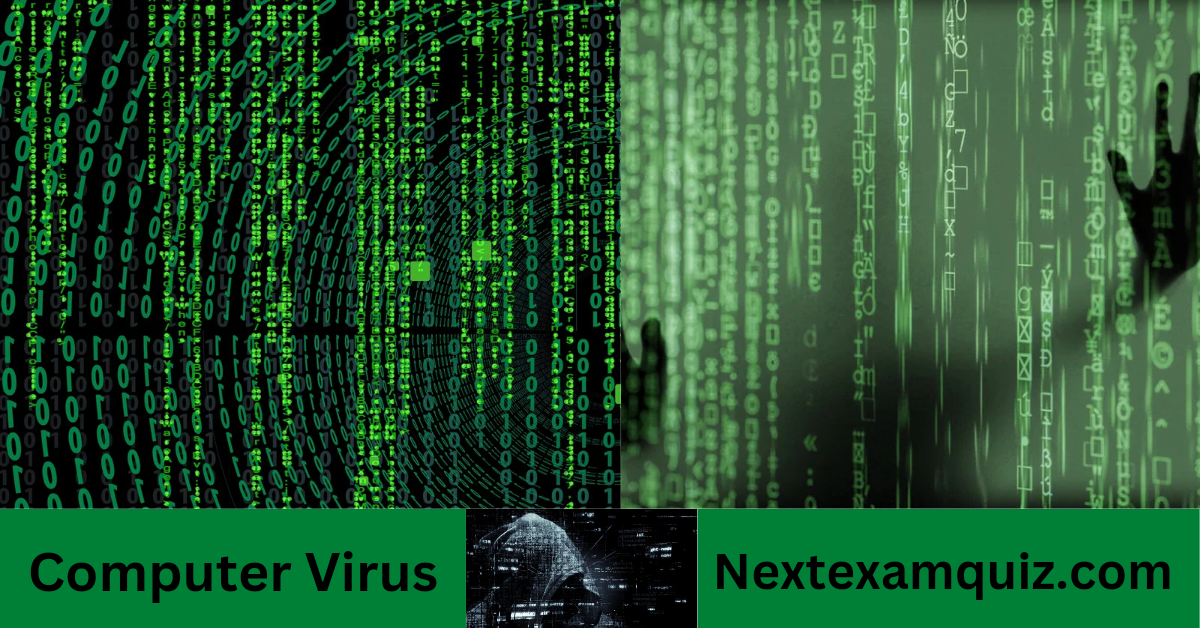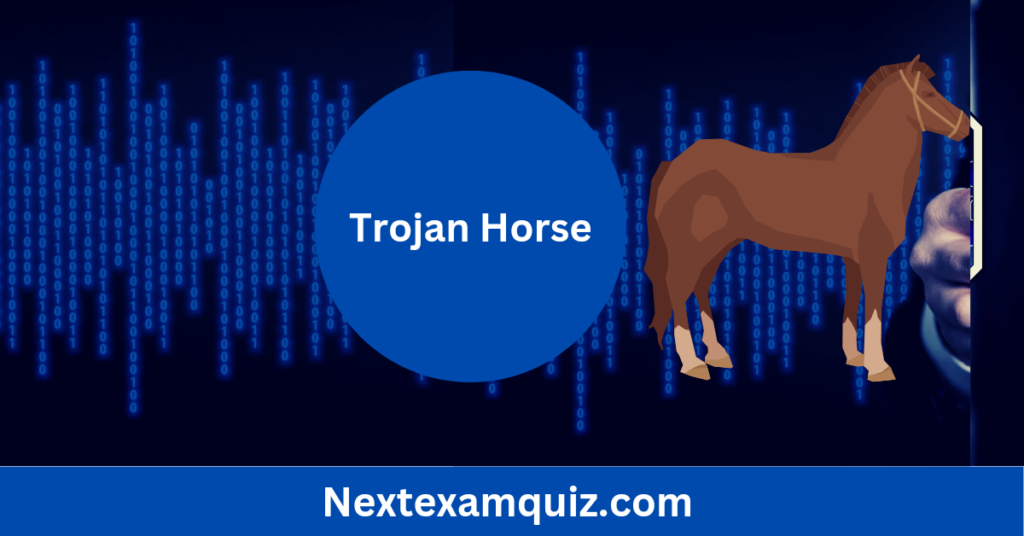
VIRUS: VIRUS stands for Vital Information Resource Under Seize. A computer virus is a small software like other software. Computer virus enters and activates when the user double click on any link that has already a virus then it becomes activated. The virus enters the computer system with the involvement of the user. Sometimes it enters the computer when the user reboots the system then the virus also activates. A computer virus can be prevented through antivirus software.
But a computer virus is a program that is used to destruct computer files without the knowledge of the user. It destruct the files of the computer system. Viruses are small programs that are designed to spread the virus. It spreads from one computer to another computer and destroys data files from the computer. A computer virus is Malware. Malware stands for Malicious software. Malware is negative software that is designed for the purpose of hacking or destroying computer files without the knowledge of the user. Computer software is both positive and negative. Positive software gives benefits to the user but negative software becomes harmful for the user when the hacker hacks important information from the user through malicious software.
Computer viruses spread from one computer to another computer to destroy computer files. The first computer Virus was CREEPER which was first shown on an early edition of the internet named ARPANET. This virus was that virus that is designed to copy itself between computers.
CREEPER was the first computer WORM that was written by BOB THOMAS in the year 1971.
REEPER was also a program that was designed to delete the self-replecting creeper.
FIRST PERSONAL COMPUTER VIRUS: The first personal computer virus was the ELK CLONER.
MALWARE: MALWARE stands for Malicious Software. These are the negative software that includes the Trojan Horse, Virus, and Worm. This malware software is designed to gain access to or damage the computer without user consent.
TROJAN HORSE: Trojan Horse is also a destructive program. Trojan Horse looks like a real or genuine application that destroys the internal security software of the computer and opens a backdoor entry to the computer where malicious users access the information of the computer. Trojan horse are designed to make a user think they are downloading a safe program and running them. But when so many advertisements show on our screens when we operate a computer the advertisements like click on this link so that your computer will become safe and fast some times user click on the link and sometimes download this software at that time trojan horse software add on our computer. Hence, it starts to destroy our information. E.g. Beast, Zero access, Rootkit, Sub 7, Zeus, etc.

WORM: WORM stands for Write once Read Many. WORM is a self-replicate in order to spread the virus to another computer. The worm is a type of software that makes various copies on the local disk drive and takes up a lot of space. Worm viruses slow down the computer system. Worm viruses propagate through the network. In Worm software, there is no involvement of the user. It automatically activates in the computer system. E.g. Bagle, I Love You, Morrie, Nimada, etc.
PHISHING: Phishing involves websites and email to access users’ personal data it may be Facebook data, Twitter data, bank account data, or personal information of the login details by believing the user the details to the trustworthy user we are sending. The user gets fake emails from various sites like banking sites but these are really not the emails of the banks and when the user clicks and logs in to the details the whole information hack. This process is called phishing.
BOOT SECTOR VIRUS: This virus involves the hard disk drive and floppy disk drives to destroy its data. It disturbed the data that is stored in the hard disk drive. ELK CLONER and BRAIN is the best example of the Boot sector virus.
ZOMBIE: Zombie program that controlled of computer and internet connection for attaching to other computers without user concern. When a user attacks the computer the user doesn’t have any idea about it.
SPOOFING: Spoofing is the process to replace the IP address and MAC address . It replaces the IP address or MAC address with a fake address for hiding the real identity.
MACRO VIRUS: Macro Virus is a virus that infects MS Office files like word and excels when the user clicks on these infected documents, this virus is inserted into MS office automatically and the sequence of action is performed automatically.
START MCQS/ QUIZ
Results
#1. When a logic bomb is activated by a time related event, it is known as?
#2. What is the name of the first computer virus?
#3. What is the name of first Boot sector virus?
#4. Which one is the person that gains illegal access to a computer system is known as?
#5. Which of the following is the type of software that has self-replicating software that causes damage to files and system?
#6. ............... monitor the user activity on internet and transmit the information in the background someone else.?
#7. Which malware has short for robot network?
#8. What kind of attempts is made by individuals top obtain confidential information from a person by falsifying heir identity.?
#9. Which of the following is the common targets of injection vulnerablities?
#10. Which of the following is known as Malicious Software?
#11. Who wrote the first computer worm program?
#12. Which of the following is not a cloud based storage solutions?
#13. Which one is a type of malware that takes your data hostage until you pay a fee to release it.?
#14. Hardware and software are designed to guard against unauthorized access to a computer network is known as .......?
#15. When a person is harassed repeatedly by being followed called or be written he/she target of?
#16. Malware is an example of which program.?
#17. The process of collecting personal information and effectively posing as another individual is known as the crime of which one?
#18. Name the first virus?
#19. What is the name of the attack that focuses on capturing small packets from the network transmitted by other computers?
#20. What is the name of the attack in which attackers overload computing or network resources.??
#21. Which one is the example of MacAfee?
#22. Which one is the program that reproduces itself?
#23. DDOS is?
#24. What is the name of the virus that deploy in RAM but not stay in RAM?
#25. What is the name of the virus that deploy and stay in RAM?
#26. Which one the more recent e-mail scams, which lures internet users into revealing personal information is referred to as:
#27. Which one is the action of recording the keys struck on a keyboards?
#28. Which virus starts when the user executes computer starts is?
#29. Which one is the right option that protect our computer from the hackers?
#30. What is the name of the software that spreads in application software is called as?
#31. What type of technology scrambles the contents of files sent via the Internet?
#32. Which one is the software pretend to be useful but actually not.?
#33. Which one of the following is a key function of firewall?
#34. Which one of the given computer programs that are designed by attacker to gain administrative access to your computer?
#35. Which one is used to protect against?
#36. CFAA stands for?
#37. Which of the following malware do not replicate or reproduce through infection?
#38. McAfee is an example of which one?
#39. Which one is the automated software program?
#40. What are those secret words or numbers used for protection of devices is called?
#41. Key logger is a ?
#42. Software pretended to be useful but actually not ........?
#43. Software, such as virus, worms and Trojan horse that has a malicious intent, is known as
#44. Which one is the stealing ideas of creations of others?
#45. Who coined the term computer virus?
#46. What are those viruses that are often transmitted by a floppy disk in the floppy disk drive.
#47. What is the name of the virus or Malware that uses the techniques which take credit card or debit card informations?
#48. WPA2 is used for security in?
#49. Systems in a botnet are also called as?
#50. Which one is the correct option unsolicited commercial email is.?
#51. What is the name of the viruses that are triggered when certain logical conditions are met?


